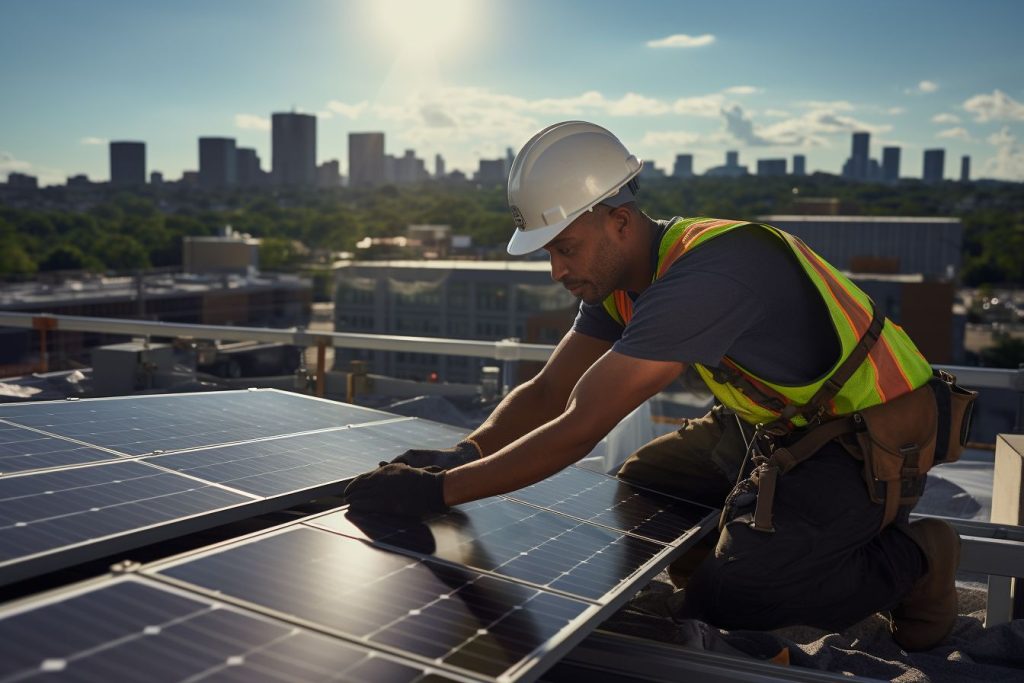Is your roof due for a replacement? This common home improvement task can significantly contribute to waste generation and carbon emissions when performed without considering the environmental impact.
This article will guide you through various eco-friendly strategies and materials that can minimise the negative consequences. So, let’s dive in and explore how we can replace roofs responsibly!
Key Takeaways
- Roof replacement generates much waste, contributing to environmental pollution and landfill overcrowding.
- Different roofing materials have varying carbon footprints, with metal roofs having a lower impact than concrete tile roofs.
- Recycling old roofing materials is a viable solution to reduce waste and promote green construction practices.
Environmental Impact of Roof Replacement
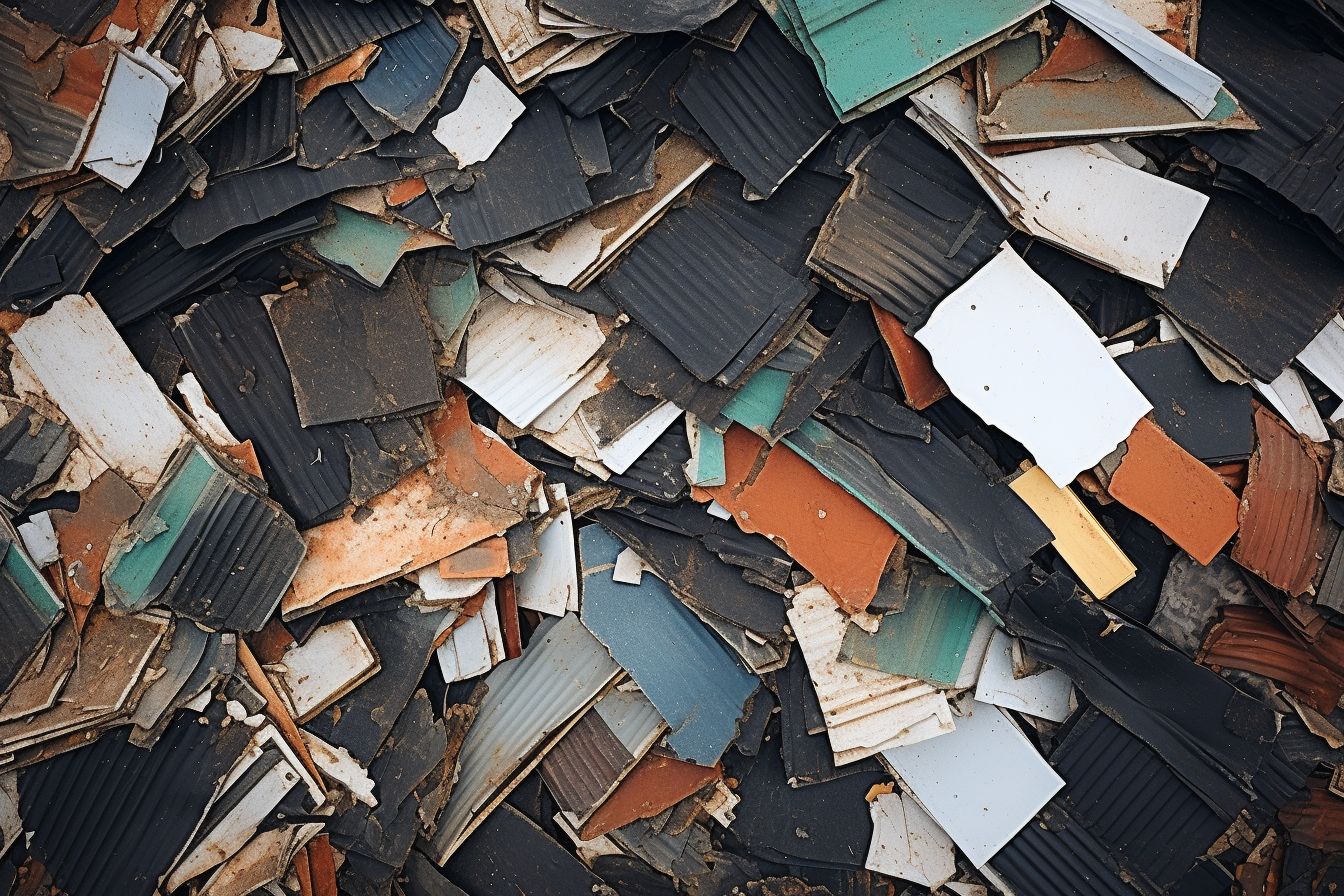
Roof replacement has significant environmental impacts, including increased waste generation and a larger carbon footprint. Disposing of old roofing materials also contributes to environmental harm.
Increased waste generation
Roof replacements significantly contribute to increased waste generation, often overlooked in its environmental impact. Waste from asphalt shingles alone piles up to millions of tons annually and rapidly fills our landfills.
Such vast amounts of construction waste not only pose issues for waste management but also add to the construction industry’s carbon footprint. The process exacerbates greenhouse gas emissions, further propelling climate change, a concerning aspect of environmental sustainability.
A single roof replacement may seem negligible; however, with millions occurring each year across America, it becomes a considerable factor affecting our environment’s health.
Carbon footprint
Roof replacements have a significant carbon footprint, marking their environmental impact beyond material waste. Metal roofs contribute to this problem but to a lesser extent when compared to other options; recycling these can result in a reduced carbon footprint of 1.27 tons of CO2e per roof replaced.
On the contrary, concrete tile roofs leave behind a more substantial mark, with an alarming carbon footprint of 4.7 tons of CO2e. Yet sheet-metal roofs display another side of the roofing story – they are champions at saving carbon and embodied energy, particularly when compared to clay tile roofs.
A simple switch from clay tiles to sheet metal can yield about 70% savings in both departments. This proves that conscious building design and carefully selecting roofing materials play crucial roles in creating environmentally friendly buildings.
Disposal of old roofing materials
Getting rid of old roofing materials presents a significant environmental challenge. Asphalt shingles, in particular, account for many construction and renovation debris.
These discarded materials create excess waste and take up valuable landfill space, contributing to environmental pollution.
Recycling is identified as a viable solution for dealing with this crushing issue of waste management. Metal roof scraps, unlike asphalt shingles, are much more eco-friendly due to their easy recyclability.
Embracing sustainable roofing options also paves the way towards preserving our environment further by easing the burden on our landfills and promoting green construction practices.
Methods to Extend the Life of Your Roof
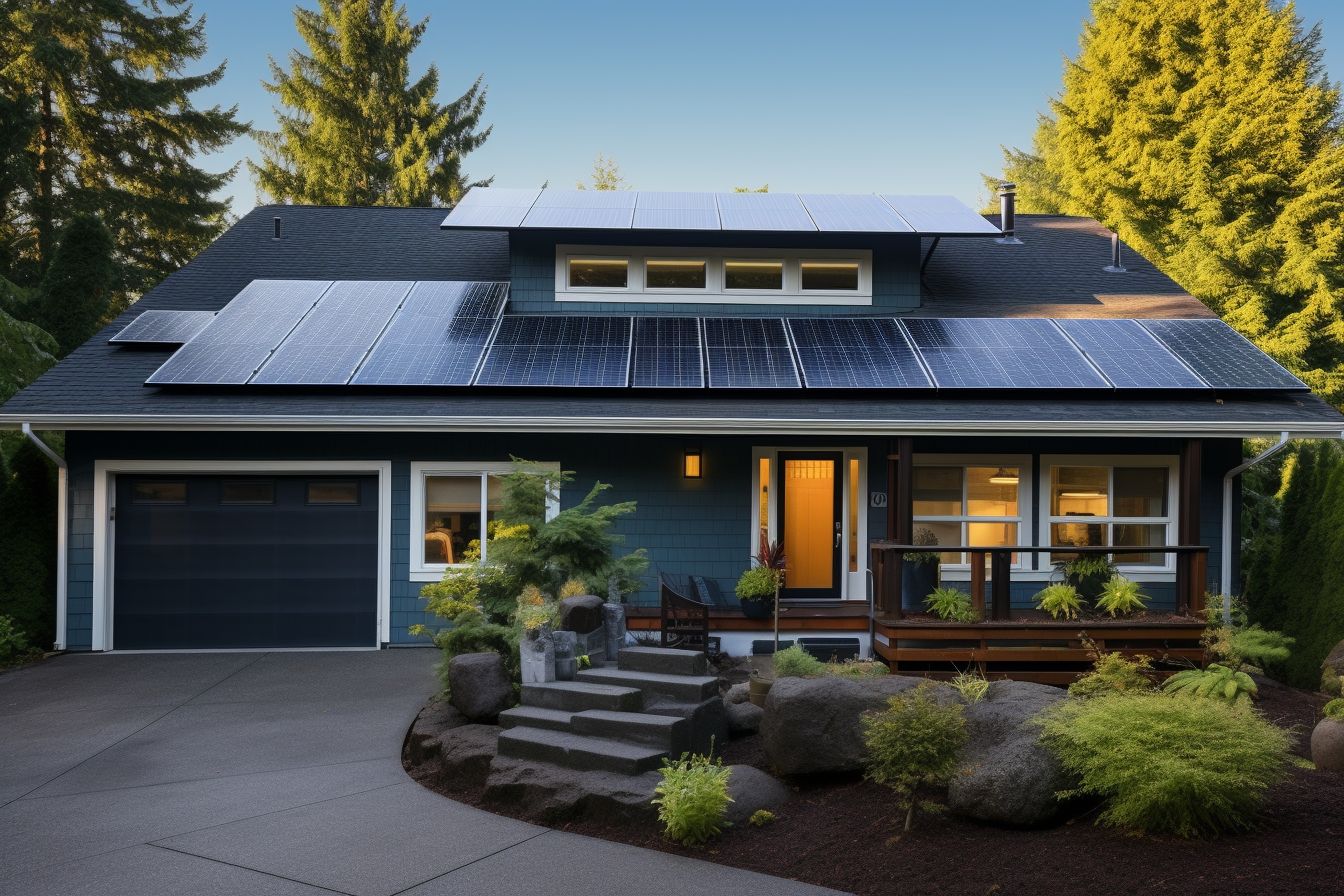
To extend the life of your roof, you can use durable roofing materials, apply roof coatings, and consider installing solar shingles.
Using durable roofing materials
Choosing durable roofing materials is a crucial step towards minimising the environmental impact of roof replacement. Opting for sustainable and eco-friendly options such as concrete, clay, or slate tiles can significantly extend the life of your roof.
These materials are known for their longevity and resilience, reducing the need for frequent replacements. Impact-resistant shingles also provide a strong and safe alternative that can withstand severe weather conditions.
By selecting durable roofing materials, you contribute to reducing waste generation and decreasing carbon emissions associated with manufacturing and disposal processes.
Roof coatings
Roof coatings are an effective way to extend your roof’s lifespan while reducing its environmental impact. These coatings can add an extra 5+ years to the life of an existing roofing system, saving you money and resources in the long run.
Applying a layer of elastomeric coating creates a protective barrier that prevents leaks and further damage to the roof. This saves on costly repairs and helps reduce waste generation from replacing entire roofs.
Additionally, elastomeric coatings are highly durable, making them a sustainable solution for commercial roofs that typically last around 20 years. With their ability to stop leaks and protect against future damage, roof coatings offer practical benefits and positive environmental outcomes.
Incorporating roof coatings into your maintenance routine is crucial for preserving the integrity of your roof while minimising its carbon footprint. These coatings save on energy consumption by preventing air leakage or heat transfer through the roof structure, and they can also reduce overall carbon emissions associated with energy usage.
Solar shingles
Solar shingles, or photovoltaic shingles, are a sustainable roofing option that integrates renewable energy into your home. They can be installed on their own or over existing roof shingles and offer a sleek and modern appearance, enhancing the overall look of your roof.
Unlike traditional solar panels, solar shingles have a longer lifespan of about 25-30 years and are more durable. With a conversion efficiency of about 15%, these long-lasting solar roofs provide an eco-friendly solution for generating electricity while protecting your home from the elements.
Recycling Options for Old Roofing Materials
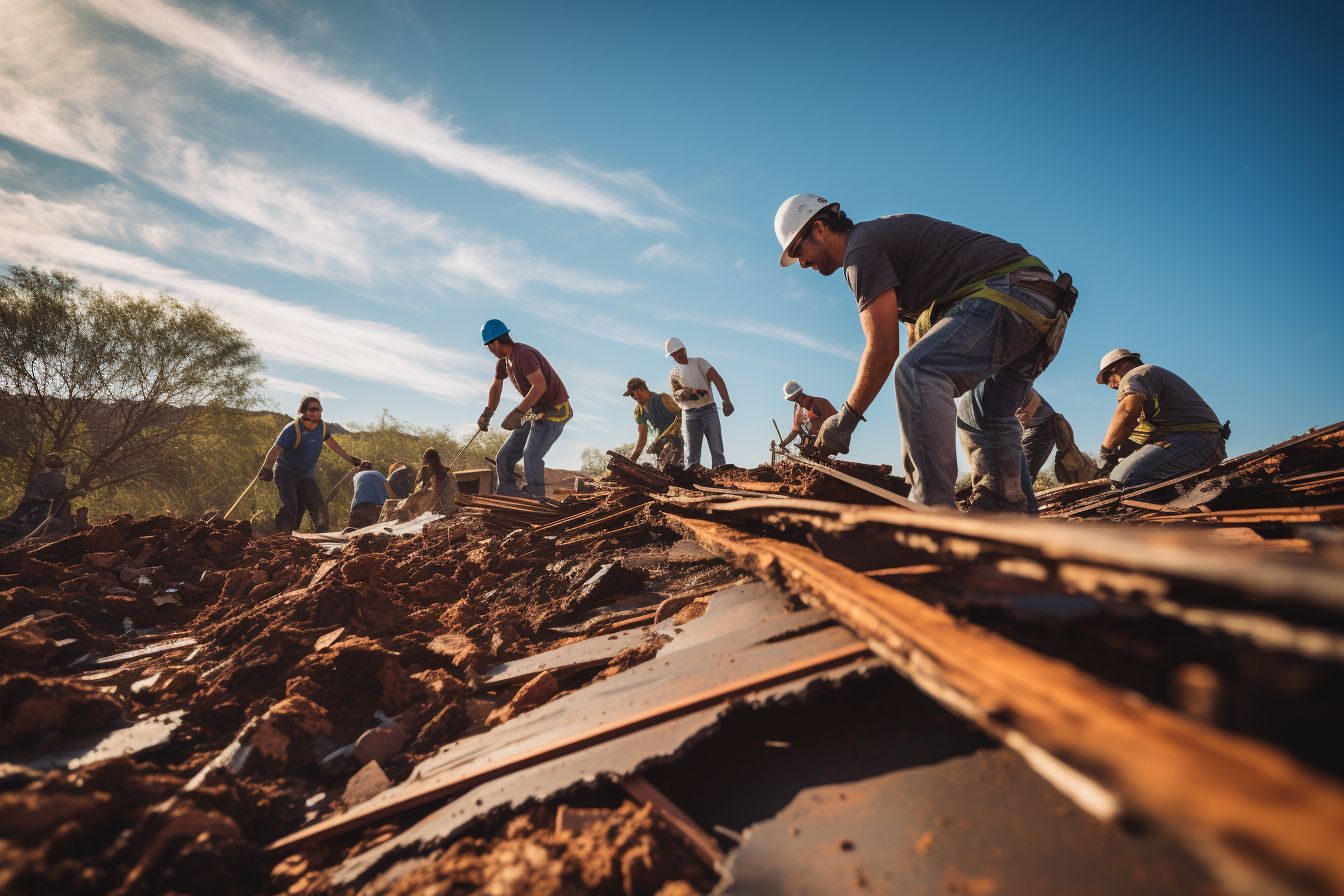
Recycling options for old roofing materials include:
- Reusing: Some roofing materials, such as metal and slate, can be reused for other projects or even repurposed within your home.
- Recycling: Many roofing materials, like asphalt shingles, can be recycled into new products. Please look for local recycling facilities that accept old roofing materials.
- Salvaging: If your roof has unique or valuable components, consider salvaging them instead of disposing them. These salvaged components can be used in future projects or sold to others needing them.
- Sustainable alternatives: Instead of using traditional roofing materials that may not be recyclable, consider eco-friendly options like sustainable wood shakes or recycled rubber shingles.
Energy Savings and Efficiency
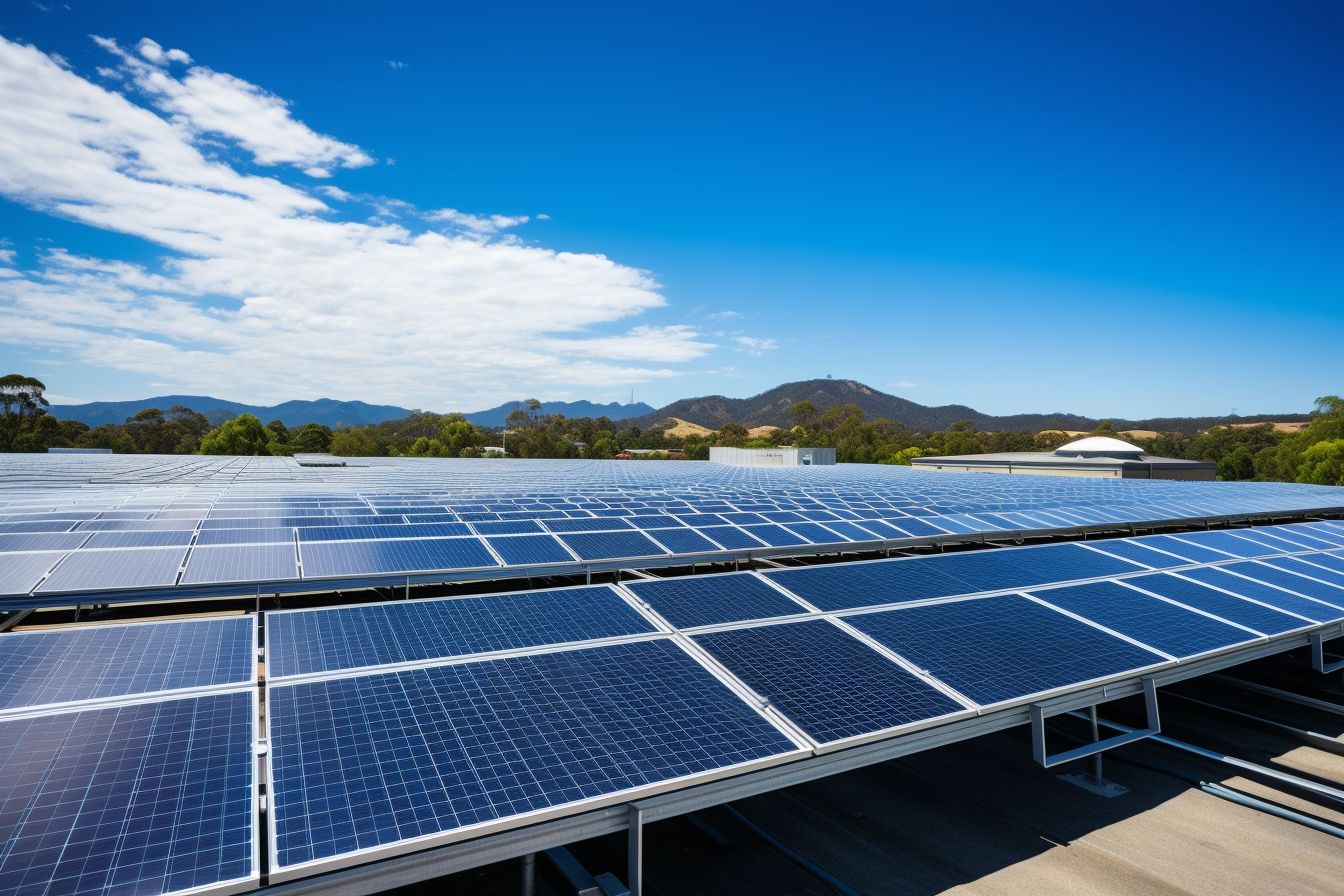
Energy-efficient roofing materials offer numerous benefits, such as reducing energy consumption and lowering carbon emissions.
Benefits of energy-efficient roofing materials
Energy-efficient roofing materials offer several benefits that can help homeowners save money and promote environmental sustainability:
- Lower Energy Consumption: Energy-efficient roofs, such as cool roofs, reflect more sunlight and reduce solar heat absorption. This leads to lower building temperatures and decreases the amount of energy needed for cooling, resulting in reduced energy consumption.
- Cost Savings: By reducing energy consumption for cooling purposes, homeowners can experience significant savings on their energy bills. Energy-efficient roofing materials contribute to a more efficient home, saving long-term costs.
- Reduced Carbon Emissions: Power plants emit greenhouse gases while generating electricity for cooling buildings. Energy-efficient roofs help minimise the need for excessive cooling, thereby reducing power plant emissions and contributing to a cleaner environment.
- Enhanced Comfort: Energy-efficient roofing materials provide better thermal insulation, which helps maintain consistent indoor temperatures throughout the year. This improves comfort levels inside the home and reduces the reliance on heating or air conditioning systems.
- Environmental Impact Reduction: Sustainable roofing practices focus on minimising resource consumption and reducing environmental impact. Energy-efficient materials contribute to these efforts by using sustainable building materials, promoting energy conservation, and reducing overall carbon footprint.
Reduction in energy consumption
Energy-efficient roofing materials can significantly reduce energy consumption in buildings. Homeowners can decrease their reliance on traditional power sources by using energy-efficient insulation, solar panel installation, reflective roof coatings, and other strategies like passive cooling systems and energy-saving appliances.
These measures lower carbon emissions and lead to substantial cost savings for homeowners. Studies have shown that switching to energy-efficient roofs can save thousands of dollars in energy costs while reducing the environmental impact caused by excessive power usage.
With the right roofing choices, individuals can play a part in conserving resources and creating a more sustainable future.
Lower carbon emissions
Energy-efficient replacement roofs can significantly contribute to lower carbon emissions. By using roofing materials designed to reflect sunlight and reduce heat absorption, these roofs help decrease the need for air conditioning and cooling systems, thus reducing energy consumption and carbon emissions.
Additionally, cool roofs can mitigate the urban heat island effect, a major contributor to increased greenhouse gas emissions and pollution. By opting for energy-efficient roofing solutions, individuals can actively promote climate action and sustainable construction practices while enjoying cost savings on their energy bills.
How to Recycle Your Old Roof
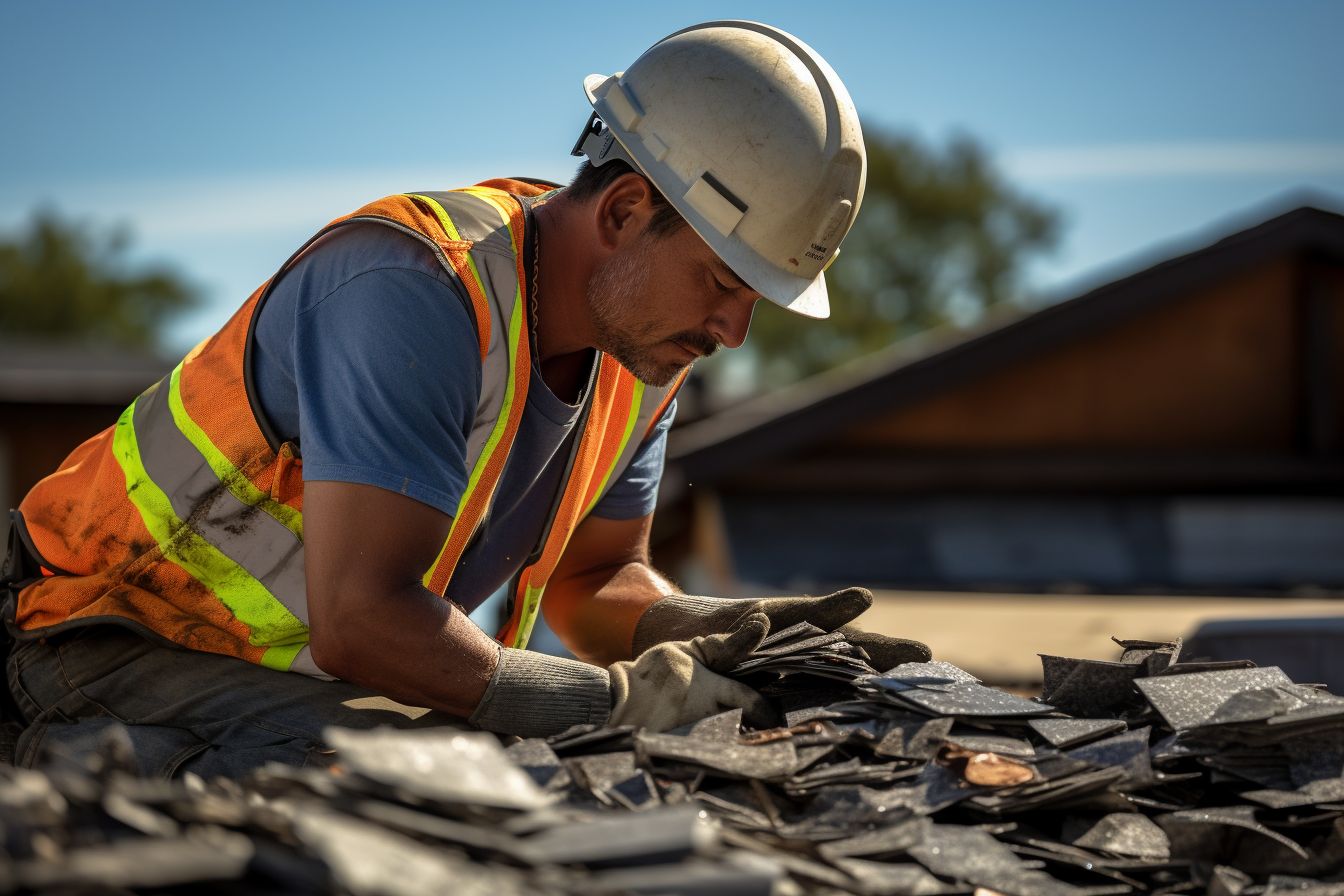
Recycling your old roof is an important step towards reducing environmental damage. Here are some ways you can recycle your old roof:
- Contact local recycling centres or waste management companies to inquire about their options for recycling roofing materials.
- Look for roofing contractors specialising in recycling and reusing old roofing materials.
- Separate recyclable items such as metal roofing and asphalt shingles from non-recyclable waste before disposal.
- Consider donating reusable materials like tiles and slate to organisations or individuals in need.
- Research manufacturers, like GAF, that have recycling programs specifically for shingles.
Conclusion
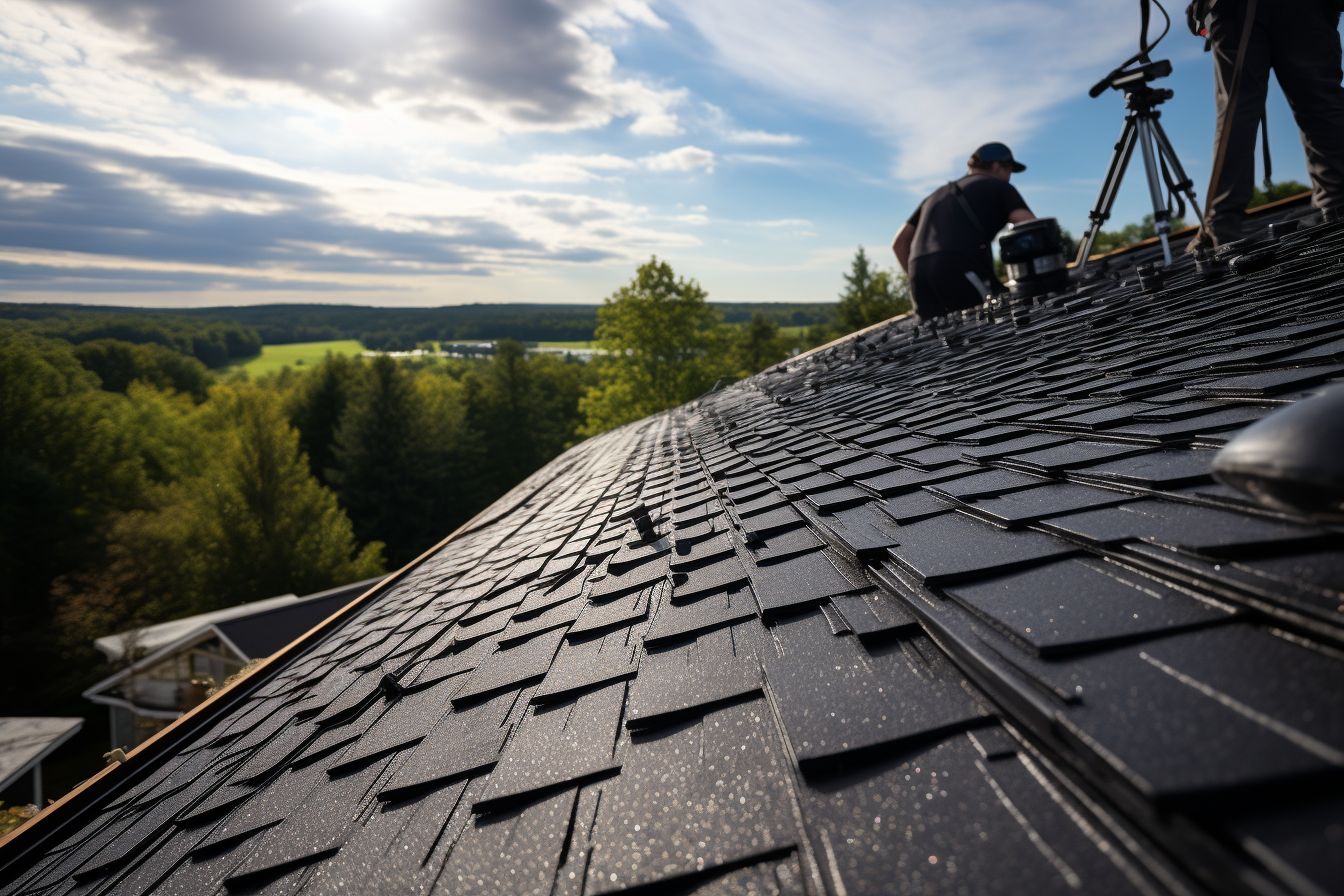
Roof replacement can significantly impact the environmental, including increased waste generation and carbon emissions. However, there are methods to extend the life of your roof and recycling options for old roofing materials that can help minimise this impact.
Choosing energy-efficient and sustainable roofing materials can reduce energy consumption and lower carbon emissions. By considering the environmental effects of roof replacement, we can promote sustainability in the construction industry and reduce our carbon footprint.
FAQs
1. How does roof replacement impact the environment?
Roof replacement can have a negative environmental impact due to the waste generated from removing and disposing of old roofing materials and the energy consumption associated with manufacturing new roofing materials.
2. Can roof replacement be done in an environmentally friendly way?
Yes, roof replacement can be done environmentally by using sustainable roofing materials, such as recycled or recyclable materials, and by properly disposing of waste through recycling or repurposing.
3. What are some eco-friendly roofing options for roof replacement?
Some eco-friendly roofing options for roof replacement include metal roofs made from recycled materials, clay or concrete tiles made from natural resources, and green roofs incorporating vegetation to improve energy efficiency and reduce stormwater runoff.
4. How long does a typical roof last before it needs to be replaced?
The lifespan of a typical roof depends on various factors, such as the type of material used and weather conditions. However, due to wear and tear, most roofs last between 20-30 years before they need to be replaced.
5. Are there any financial incentives for choosing environmentally friendly roofing options?
Depending on your location, financial incentives may be available for choosing environmentally friendly roofing options, such as tax credits or rebates. It would be best to check with local government agencies or utility companies for potential programs or incentives available in your area.

